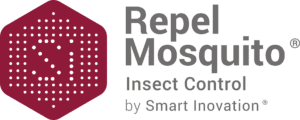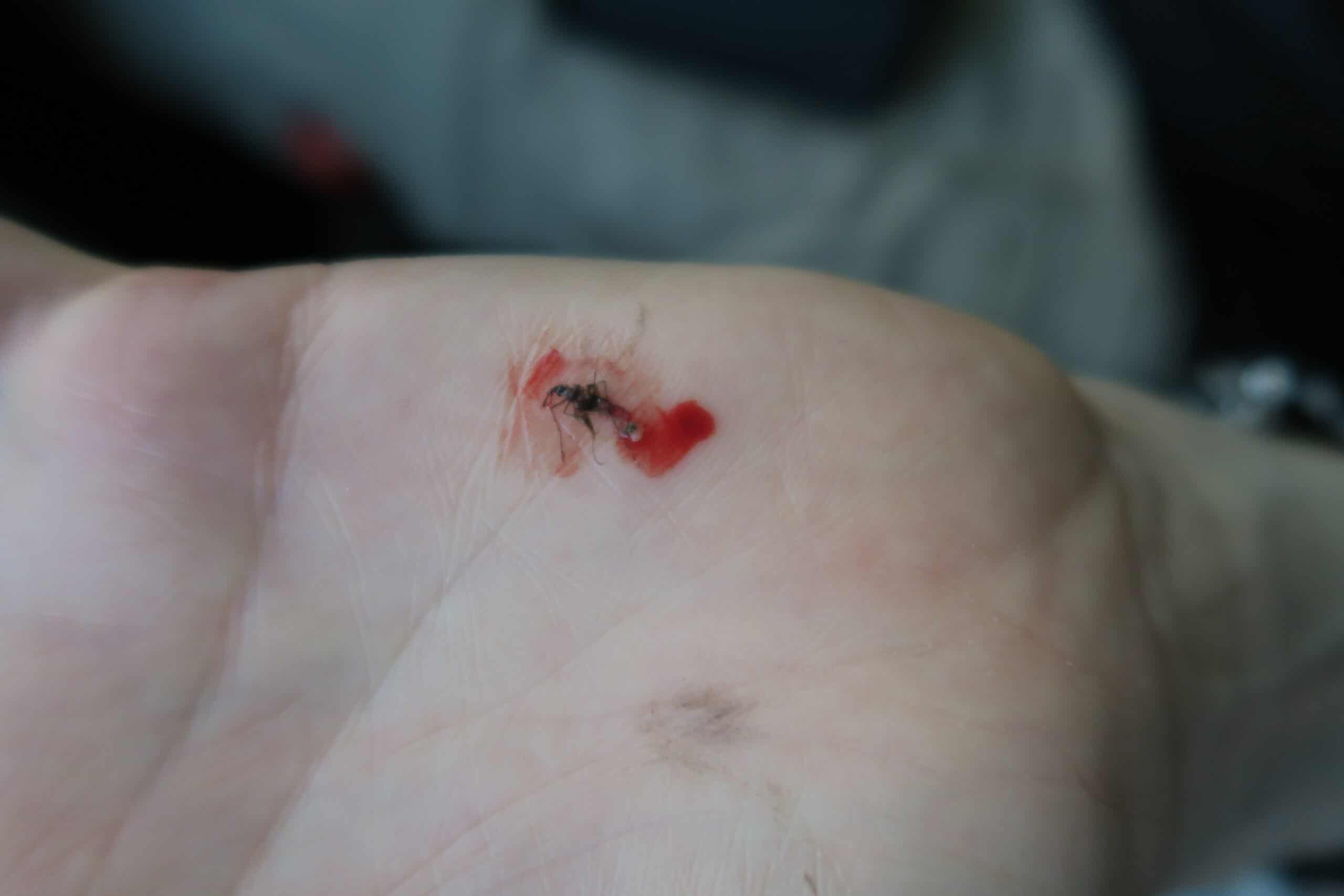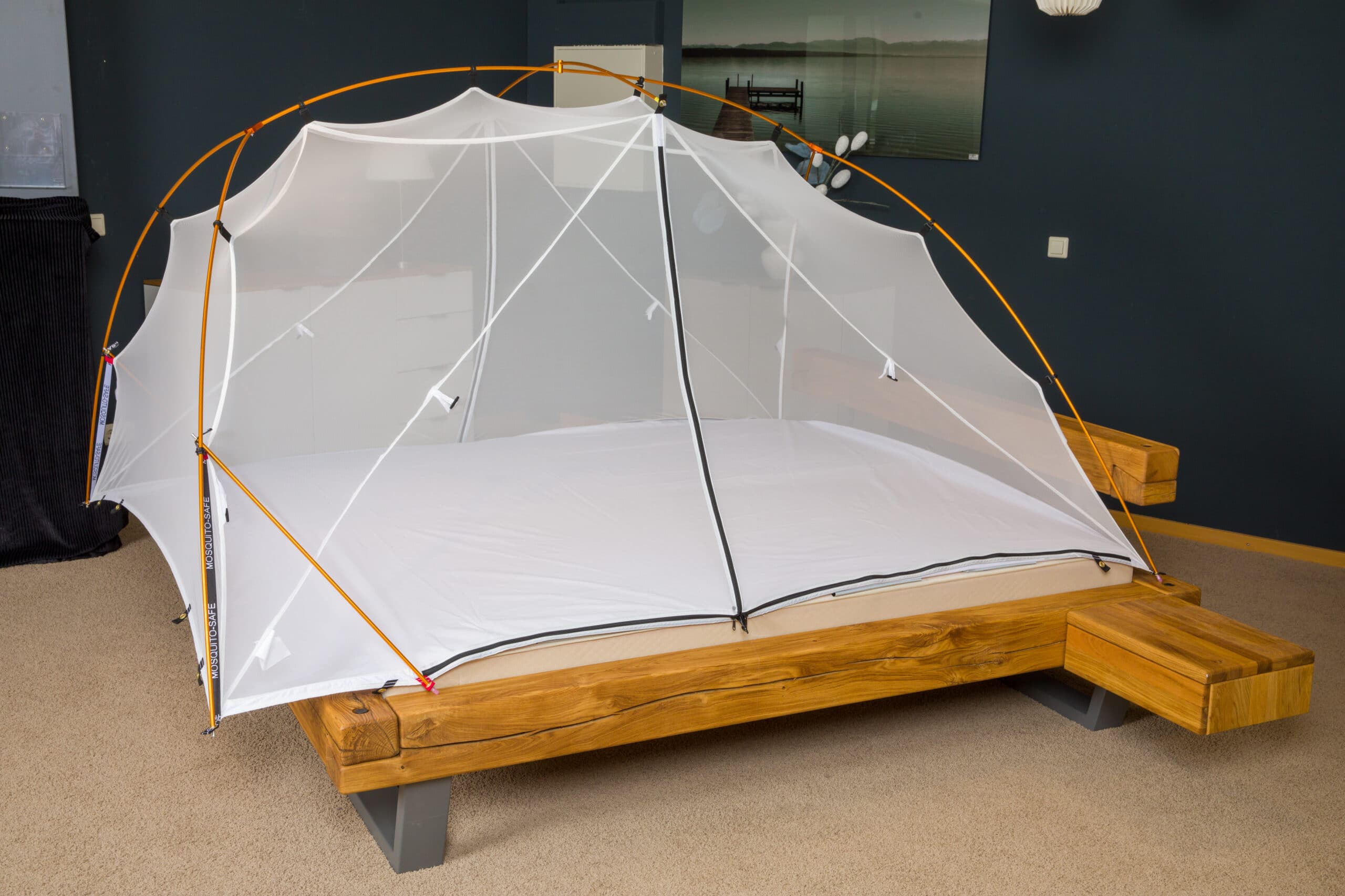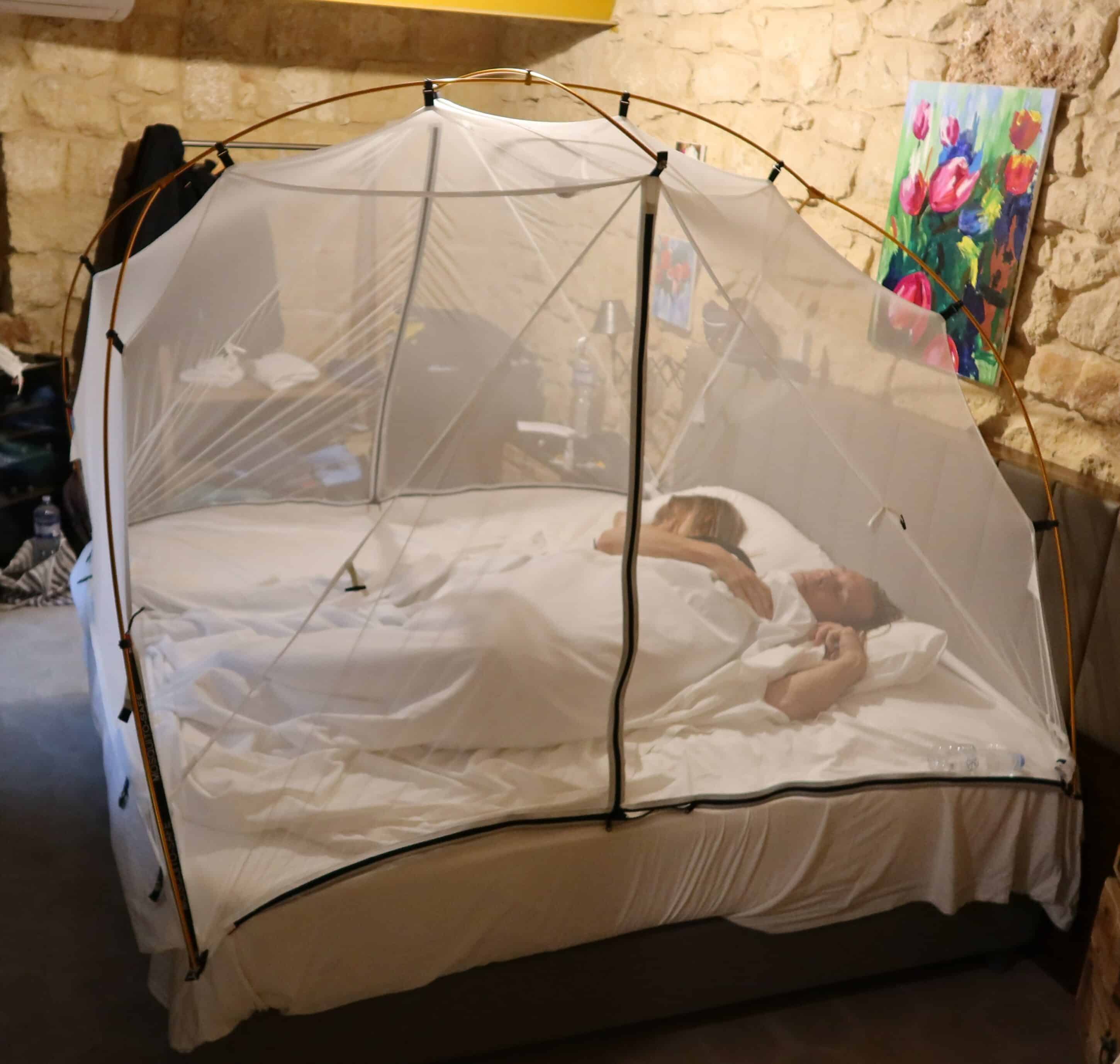Originally, the tent was developed for mosquito protection during travels to tropical countries. However, tropical diseases are spreading towards more temperate climates, too, and therefore the MOSQUITO-SAFE tent is becoming more and more interesting for other target groups, too.
The tent protects you in two ways:
- by forming a mechanical barrier (bottom material and mesh) that offers all-around 100% protection when you’re inside the closed tent.
- by its impregnation that repels insects and arachnids and keeps them from landing on the fabric.
Even if a part of your body touches the mesh, no mosquito will bite you through the fabric as they are reliably repelled and keep a safety distance to the tent.
The impregnation also keeps bedbugs away from the MOSQUITO-SAFE tent. Therefore you won’t accidentally introduce any bedbugs to your suitcase or your apartment when stowing away the tent.
- The impregnation with Repel Mosquito® by Smart Inovation® completes the protection offered by our mosquito tent.
- The bottom material as well as the mesh are both impregnated.
- The impregnation contains a biocide. This substance acts as a repellent, it is not an insecticide.
- It is effective against flies, ticks, mosquitoes, wasps, lice and bugs like bedbugs.
- Thanks to the repellent effect, the insects cannot develop resistances.
- It is non-toxic, odorless and safe for babies six months and older, as well as for pregnant and breast-feeding women.
- The repellent is bound to a matrix and is therefore firmly fused to the material. This results in a high washing resistance of over 100 cycles. Proof that the active agent is firmly fused to the material in the long run.
- The active ingredient is IR3535 (ethyl butylacetylaminopropionate).
- The impregnation with the active ingredient is certified in accordance with the ECO PASSPORT by OEKO-TEX®.
“In many regions of Germany, scientists have been able to prove that exotic mosquito species like tiger mosquito or bush mosquito act as potential vectors for tropical viruses and other diseases. Experts assume climate change plays an important role for their spread. However, local mosquito species like Culex pipiens are also counted amongst the vectors of the West Nile Fever. Especially in the greater area around Berlin, in entire East Germany, but also in North Germany, the risk is present. The virus is mostly transmitted between wild birds and mosquitos, however, infected mosquitos may also bite humans.” (see: NDR Visite Mücken)
The agent Wirkstoff IR3535 (ethyl butylacetylaminopropionate) is explicitely recommened by the WHO (World Health Organisation) (see: WHO – Zika virus disease). It’s abbreviated EBAAP (short for ethyl butylacetylaminopropionate), or called 3-[N-n-butyl-N-acetyl] aminopropionic acid ethylester. It is biologically degradable. IR3535 is safe for aquatic organisms like fish or algae (see: Merck – IR3535®). According to the WHO, this substance has the most favorable toxicological and ecotoxicological safety profile of all approved biocides.
Mode of action of IR3535:
“Insects use natural scents for navigating. There are various natural substances insects use as signals. For example, there are substances that help male mosquitos finding females, or lead females to a host on whose blood they can feed. IR3535 is based on a natural amino acid named ß-alanine. The simple message it sends to insects: Stay away! This is called “repelling effect”. IR3535 is thus an insect repellent, which signals to insects to flee. Some repellents also have an insecticidal function, i. e. they kill insects on contact. This is not the case with IR3535, it only sends a repelling signal but does no harm to the insects.” (see: Merck – Insektrepellent)
In article 3 paragraph 1 of the Regulation (EU) No 528/2012 (Biocidal product regulation), the European Union defines biocidal products as follows: “any substance or mixture, in the form in which it is supplied to the user, consisting of, containing or generating one or more active substances, with the intention of destroying, deterring, rendering harmless, preventing the action of, or otherwise exerting a controlling effect on, any harmful organism by any means other than mere physical or mechanical action”. Since the active ingredient keeps away insects, amongst others, it is classified as biocidal product.
ECO PASSPORT by OEKO-TEX® is an independent certification system for chemicals, colorants and auxiliary agents used in manufacturing textile and leather products. The organization makes sure each and every ingredient of the chemical product complies with applicable laws and has no negative effects on human health.

Sources:
NDR Visite Mücken: Auch heimische Art überträgt West-Nil-Virus (Local species may also act as a vector for the West Nile Virus), as of September 7, 2020, accessed May 24, 2021, https://www.ndr.de/ratgeber/gesundheit/Muecken-Auch-heimische-Art-uebertraegt-West-Nil-Virus,muecken262.html#tab=tab_3
WHO (Hrsg.) Zika virus disease, as of – unknown, accessed May 22, 2021, https://www.who.int/health-topics/zika-virus-disease#tab=tab_3
Merck KGaA (Hrsg.) IR3535®, as of 2019, accessed May 22, 2021, https://www.merckgroup.com/de/brands/pm/ir3535.html
Merck KGaA (Hrsg.) Insektrepellent – as of 2021, accessed May 22, 2021, https://www.merckgroup.com/de/expertise/cosmetics/care-solutions/insect-repellent/faq.html




0 Comments